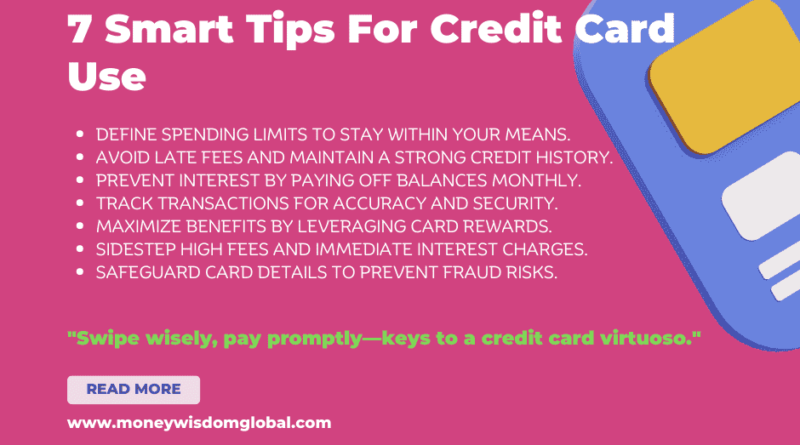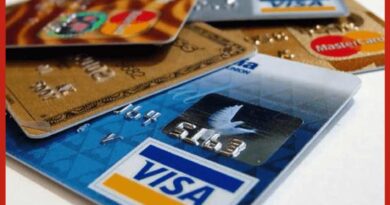Beyond Transactions: How to Use a Credit Card for Financial Success
Introduction
The credit card emerges as a symbol of convenience, empowerment, and potential in a time when financial transactions have transitioned from physical currency to digital realms. With just a swipe or click of a button, the world of commerce is easily accessible, promising the fulfillment of desires and the realization of dreams.
In this article, we set out on a quest to shed light on how to use a credit card. While this piece of plastic opens up a world of shopping opportunities, it also serves as a financial tool and a discipline lesson.
Understanding the Basics of a Credit Card
To understand how to use a credit card, we first need to learn the basics.
- Essential Financial Tool: A credit card is a financial tool that allows you to make purchases on credit, essentially borrowing money from the card issuer.
- Card Components: It comprises essential information, including the card number, cardholder’s name, expiration date, and CVV code for security.
- Issuer and Network: Credit cards are issued by banks or financial institutions and operate on payment networks like Visa, Mastercard, and American Express.
- Available Credit: Your credit limit is the maximum amount you’re allowed to borrow. Available credit is what you have left to spend within that limit.
- Monthly Statements: Credit card transactions are consolidated into monthly statements, detailing your spending and balance owed.
- Minimum Payment: Each month, you’re required to make a minimum payment, usually a small percentage of the outstanding balance.
- Interest Rates: If you don’t pay your balance in full, you’ll be charged interest on the remaining amount, known as the Annual Percentage Rate (APR).
- Credit Score Impact: Responsible credit card use, including timely payments, positively affects your credit score, while mismanagement can harm it.
- Security Measures: Many credit cards include EMV chips for added security, and contactless payments offer a quick and secure way to transact.
- Global Usage: Credit cards can be used internationally, but foreign transaction fees may apply.
Example: Sarah receives her first credit card. She understands that the card number, expiration date, and CVV are crucial for online purchases and security.
Actionable Tip: Safeguard your card details by not sharing them with anyone and avoiding writing them down where others can see them.
Selecting the Right Credit Card
- Types of Cards: Choose from various types, such as rewards cards, cashback cards, travel cards, and secured cards.
- Rewards Match: Align the card’s rewards with your spending habits and preferences for maximum benefits.
- Fees and Costs: Consider annual fees, balance transfer fees, and foreign transaction fees when comparing options.
- Interest Rates: Look for a low APR if you anticipate carrying a balance, but prioritize paying off the balance each month to avoid interest.
- Credit Score: Apply for cards that match your credit score range for a higher chance of approval.
- Introductory Offers: Some cards offer introductory 0% APR periods or bonus rewards; evaluate their duration and value.
- Additional Benefits: Explore card perks such as purchase protection, extended warranties, and travel insurance.
- Issuer Reputation: Choose cards from reputable issuers known for customer service and transparent terms.
- Flexibility: Opt for cards that fit your financial goals and lifestyle, offering features that cater to your needs.
- Comparison: Research and compare multiple options to find the card that aligns best with your financial preferences.
Real-Life Scenario: Mark loves to travel, so he’s looking for a credit card that offers travel rewards. He researches different travel cards and compares their annual fees, rewards rates on travel spending, and additional perks like airport lounge access. He chooses a card that aligns with his travel aspirations.
Actionable Tip: Before applying, use online comparison tools to see how different credit cards stack up in terms of rewards, fees, and features. This can help you make an informed decision.
Activating your Credit Card
- Activation Methods: Activate your card online, through a mobile app, over the phone, or by following the instructions provided with the card.
- Security Precautions: Activate your card promptly to prevent unauthorized use, and keep activation codes secure.
- Personal Information: During activation, you might need to provide your card number, CVV, and other personal details for verification.
- Expiration Date Check: Confirm the card’s expiration date during activation and ensure it’s valid for use.
- Test Transaction: Some cards may require a test transaction to verify your identity before full activation.
- Confirmation: After successful activation, you’ll receive confirmation via email, text, or mail.
- Immediate Use: Once activated, your card is ready for immediate use for purchases and transactions.
- Customer Support: If you encounter issues during activation, contact customer support for assistance.
- Activation Window: Some cards have an activation deadline, so ensure you activate within the specified time frame.
- Safe Disposal: Once activated, keep the activation materials secure or dispose of them properly to prevent fraud.
Practical Example: When Rita receives her new credit card, she follows the instructions provided. She visits the issuer’s website, enters her card information, and sets up a secure PIN. Her card is now activated and ready for use.
Actionable Tip: After activating your card, sign the back of it with a permanent marker. This adds an extra layer of security in case your card gets lost or stolen.
Making Purchases with your Credit Card
- Select Merchant: Choose a merchant that accepts credit card payments, whether online or in-store.
- Provide Card Details: Provide your credit card number, expiration date, and CVV for online transactions.
- In-Store Transactions: For in-store purchases, insert, swipe, or tap your card on the terminal, then sign or enter your PIN.
- Online Security: Ensure the website is secure and reputable before entering card details.
- Transaction Approval: Transactions may require a signature, PIN, or biometric verification approval.
- Instant Transactions: Most transactions are approved instantly, but some may be subject to verification.
- Transaction Record: Retain receipts or transaction details for your records and to compare with your statement.
- Contactless Payments: Tap-to-Pay with contactless cards or mobile wallets for quicker and more secure transactions.
- Stay within your budget: Keep track of your spending to ensure you stay within your budget and available credit.
Real-Life Scenario: Alex is at a local electronics store. He wants to purchase a new laptop using his credit card. He swipes his card on the terminal, selects “credit,” signs the receipt, and his purchase is complete.
Actionable Tip: (i) If you’re making a large purchase, consider contacting your credit card issuer in advance to let them know. This can prevent potential fraud alerts or transaction blocks.
(ii) Use contactless payments for quicker transactions, but always ensure the security of the website when making online purchases.
Responsible Credit Card Usage: Best Practices
- Pay On Time: Always make payments by the due date to avoid late fees and negative credit impacts.
- Full Payment: Aim to pay the full balance each month to avoid interest charges on carried-over balances.
- Monitor Spending: Regularly track your transactions and spending to stay within your budget.
- Budgeting: Incorporate credit card expenses into your overall budget to manage your finances effectively.
- Credit Utilization: Keep your credit utilization ratio (credit used divided by credit limit) below 30% to maintain a healthy credit score.
- Emergency Use: Use credit cards for emergencies or planned purchases, not as a routine funding source.
- Avoid Cash Advances: Steer clear of cash advances, as they come with high fees and immediate interest charges.
- Protect Personal Data: Guard your card details, PIN, and passwords to prevent fraud and unauthorized use.
- Review Statements: Regularly review statements for accuracy, unauthorized charges, or unusual activity.
- Educate Yourself: Understand card terms, rewards, fees, and policies to make informed financial decisions.
Paying your Credit Card Bill
- Billing Cycle: Understand your billing cycle—when it starts and ends—to track your spending.
- Statement Arrival: Expect your statement at the end of the billing cycle, detailing transactions and balances.
- Minimum Payment: Pay at least the minimum amount by the due date to avoid late fees and credit score impact.
- Full Payment: Aim to pay the full statement balance to avoid accruing interest on carried-over balances.
- Payment Methods: Make payments online, through mobile apps, by phone, or by mail using bank accounts or cards.
- Scheduled Payments: Set up automatic payments to ensure on-time payments and avoid forgetting.
- Payment Allocations: If you carry a balance, payments go towards fees and interest first, then the principal.
- Pay Early: Making payments before the due date reduces the risk of any processing delays.
- Late Payments: If you can’t pay on time, contact the issuer to discuss options and mitigate late fees.
- Confirmation: After payment, confirm its processing and monitor your balance for adjustments.
Utilizing Rewards and Benefits
- Rewards Programs: Understand the rewards structure—points, miles, and cashback—offered by your card.
- Earning Rewards: Use your card for eligible purchases to accumulate rewards based on spending categories.
- Redemption Options: Explore how to redeem rewards, whether for travel, merchandise, statement credits, or more.
- Maximize Points: Opt for cards that align with your spending habits to maximize rewards in preferred categories.
- Promotional Offers: Take advantage of limited-time offers like sign-up bonuses and extra rewards.
- Travel Benefits: Benefit from perks such as travel insurance, airport lounge access, and concierge services.
- Purchase Protection: Leverage benefits like extended warranties and price protection for qualifying purchases.
- Expiration: Be aware of reward expiration dates and plan to use them before they lapse.
- Terms and Conditions: Familiarize yourself with program rules, restrictions, and redemption processes.
Practical Example: Emily has a cashback credit card that offers 3% cashback on dining purchases. She uses this card whenever she eats out, accumulating cashback rewards over time.
Actionable Tip: Many credit card issuers offer online shopping portals where you can earn extra rewards by clicking through their links. Before making an online purchase, check if your card issuer has such a portal.
Final Takeaway
With knowledge and insights at your disposal, you are prepared to use your credit cards wisely and with purpose as you stand at the crossroads of credit card usage. Understanding credit limits, using credit cards sensibly, and earning rewards have all been steps in the process of revealing the credit card’s multidimensional nature—a tool that goes beyond ordinary transactions.
It’s a way to develop financial discipline, improve creditworthiness, and make strategic decisions in accordance with your goals.
Always keep in mind that every swipe or click involves a financial cost. By keeping track of due dates, keeping tabs on your spending, and living within your means, you’re not only avoiding financial disasters but also laying the groundwork for a stable financial future.




